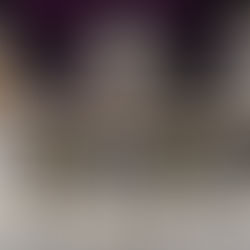The Imperial State Crown - Replica










I was very fortunate to be asked to make this representation of the Imperial State Crown by an American collector who for many years has been commissioning replicas of significant crowns from around the world, representing many periods and styles.
I had made some less accurate versions of the Imperial State Crown (see Videos - Crowns section) though there were always budget and/or time constraints. This client was keen to have the best possible replica of the crown, and was patient enough to allow me to work on his commission over a very long period without a specific deadline while I continued to work on other projects. He was also generous enough to agree to my investing hundreds of hours in producing the many original models, moulds, casts and finally to produce this finished crown. I am proud of the crown I ultimately made for him and he has been kind enough to say that he believes this to be the most accurate replica of the Imperial State crown that has been made to date.
Despite the level of accuracy I have achieved, there are still some small differences to be found between this version and the actual crown, but hopefully none too significant. For example the many stones which represent the diamonds. The Imperial State Crown is set with 2868 diamonds whereas this crown is set with 3317 stones (a combination of cubic zirconia and foil-backed diamante stones). The difference in numbers is due to every diamond in the original crown having been custom cut in an almost infinite number of shapes and sizes over centuries, which have been set to fit edge to edge like a jigsaw. Shaped stones are not generally available in the range of shapes and sizes that would have been more accurate representations, and therefore I was obliged to use mostly round stones, and it was often necessary to add small stones to fill gaps where the larger stones could not meet closely enough.
The major coloured stones were cut to order by a very skilled lapidarist, who was able to replicate the colour, shape, size and facet pattern of the original stones.
The Cullinan II diamond was cut to order in cubic zirconium in the Far East, using specifications from the original stone, replicating the exact dimensions and facet patterns. I modelled The Black Prince Ruby, plus its small accompanying stone, and cast them in pigmented epoxy resin. I 3D printed the 36 individually shaped pearls which were coated in many layers by a jeweller colleague to match the colour and finish of the stock round pearls I used on the two bands.
The original crown is built around a framework of gold wire. This crown is built around a framework of hardened steel wire making the crown considerably more sturdy, and less likely to be damaged or become distorted. For previous crowns, I had created all of the components using conventional jewellery techniques, and for reasons of budgets and time as previously mentioned they were not generally too accurate. For this crown I created the originals of every element using 3D printing software which enabled me to produce much finer and more accurate details. Having printed them in resin and produced the moulds, I cast the 161 components needed in lead-free pewter which were then refined, polished and soldered onto the frame. The bands supporting the two rows of pearls, the custom made head-pins which attach the pearls and the mount which supports the Cullinan stone were made in various metals and account for a further 21 components. Each element was electroplated in silver or gold finishes respectively, before final assembly. The "ermine" roll was made with white synthetic fur, set with custom-made black synthetic fur "tails". The velvet cap is supported by a mesh under-cap. The crown has a satin lining, and a satin draw-string inner lining.
Definitive and excellent photographs of the actual Imperial State Crown together with extensive historical and other information can be found on the Royal Collection Trust website
https://www.rct.uk/collection/31701/the-imperial-state-crown


Photographs and video on this page by Woodie Williams











